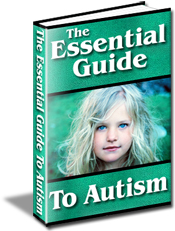What Is PDD Autism?
Click Here To Know The Simple Methods To Effectively Spot The 31 Signs of Autism
For a long time, many children with PDD (pervasive development disorders) went undiagnosed. These children were, for a time, labeled as shy, strange, or weird, when if fact they were suffering from a medical condition. PDD autism is something that has both new and old form, and some of the higher functioning children were the ones that were largely misunderstood. Thanks to new research and new information, some of these children can now go on to lead what would appear to be a ?normal? life.
The word normal is subjective, as what is normal for one child is not for another. Some with higher functioning PDD can often blend in with what is considered ?normal,? but at the same time, they believe that they are who they are because of their autism, and there are some who say they would not change that.
However, because they want to interact with those who do not have PDD, they do have to adjust. If PDD is identified early enough, there are many positive programs that can help these children to overcome some communication and socialization problems that are common with these autistic conditions.
The common characteristics of a child with PDD center around communication problems. These range in severity from not talking at all to having an extensive vocabulary. Some autistic children never speak, and prefer to use hand motions for communication. Others have problems with basic communication, but they can learn to use words to talk to the rest of the world. Those with large vocabularies may have problems because they often say the wrong things, and at times will take every word at the most literal sense, which can lead to confusion and problems with conversations.
Others PDD characteristics are to do with social settings. They want to interact with their peers, but they have many problems doing so. They are often thought to be painfully shy at first. They lack the skills to build the relationships that many of us take for granted. Some of this comes from communication barriers, and also from a lack of understanding.
They lack the ability to get and hold eye contact, and often say the wrong things. This can be very painful for them, and after a few attempts to make friends with their peers, they often show a preference to play alone. This is because the anxiety of peer relationships is too much for them, and they find more peace by being alone.
Quite often, PDD autism is noticed by age three. This is not true for all children, but holds true for a majority. Other signs are repetitive motions and play, tantrums that result from the tiniest disruption of their daily routine, occasional aggressive behavior (probably as a result of failed communication), and being too sensitive or not sensitive enough to outside stimulation. All children with PDD will have different symptoms and different levels of function. Early diagnosis is a great help, and can lead to a better quality of life on down the road for many with PDD.
By Rachel Evans. Sign up for a free newsletter for more information on autism. In the newsletter you'll find out more about the signs and symptoms of autism.
Labels: animal_autism, article_autism, asperger_autism, autism_characteristic, autism_diet_free_gluten

